D Link DWLG120C1 IEEE802.11g WLAN USB Adapter User Manual dwl120v F manual 102103
D Link Corporation IEEE802.11g WLAN USB Adapter dwl120v F manual 102103
D Link >
Contents
- 1. Users manual part 1
- 2. Users manual part 2
- 3. Users manual part 3
Users manual part 2
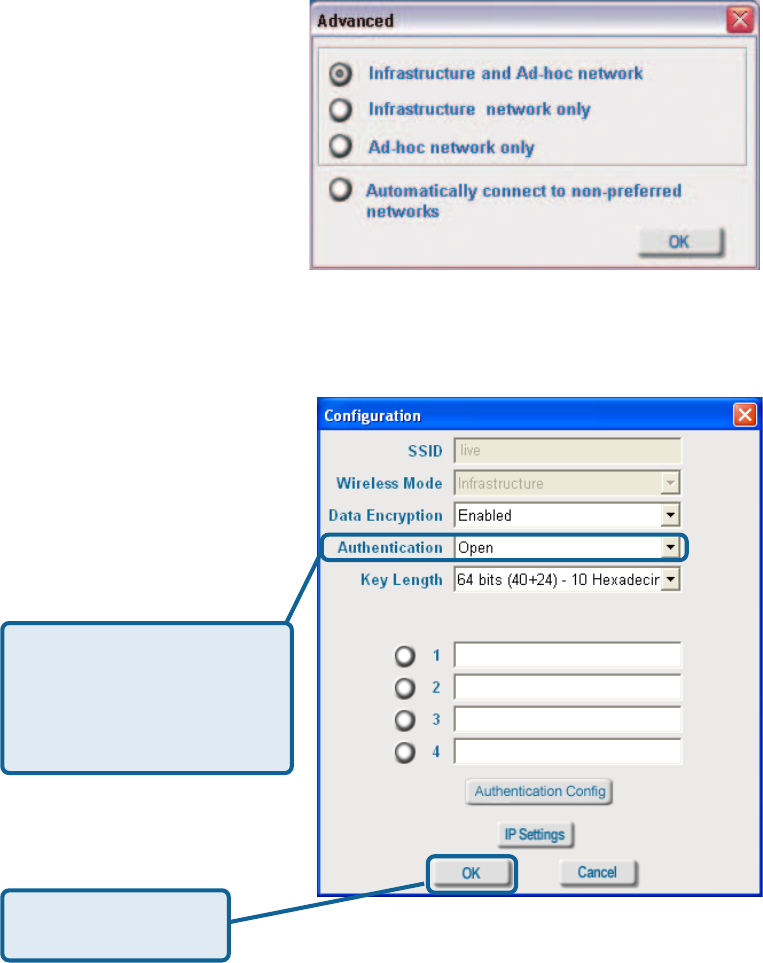
16
Using the Configuration Utility (continued)
Site Survey > Add
If you clicked on Add, you can
configure, in this window, all the
properties of a profile that you
wish to add to the network.
In this window you can select
the type of network connection.
Click OK to save the
changes.
If you clicked on Configuration
or Properties you can config-
ure, in this window, all the prop-
erties of a profile that already
exists in the network.
Click OK to save the
changes.
Advanced
Configuration, Add or Properties
If you select WPA in the
Authentication field, please
see detailed instructions for
configuring WPA on the
following pages.
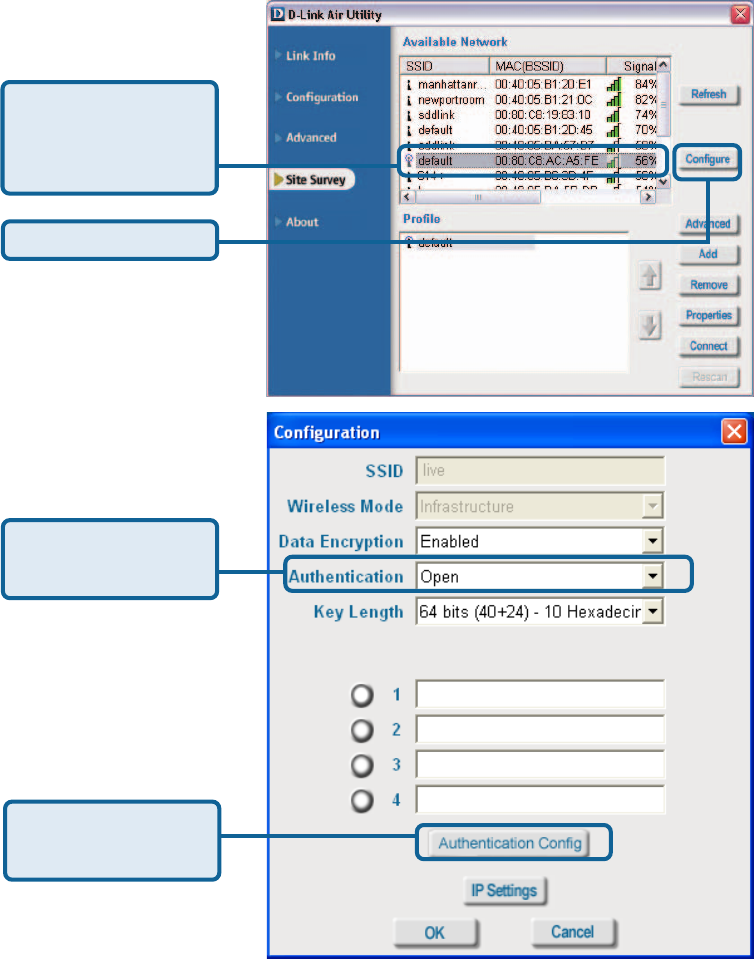
17
Using the Configuration Utility (continued)
Authentication > WPA
Click Configure.
Select the available
network to which you
want to connect.
After you click Authentication Config, the Advanced Security Settings screen will ap-
pear. Complete the Advanced Security Settings configuration. Please see pages 17-20 of
this manual to find out more about the Advanced Security Settings.
Click Authentication
Config
Select WPA in the
Authentication field.
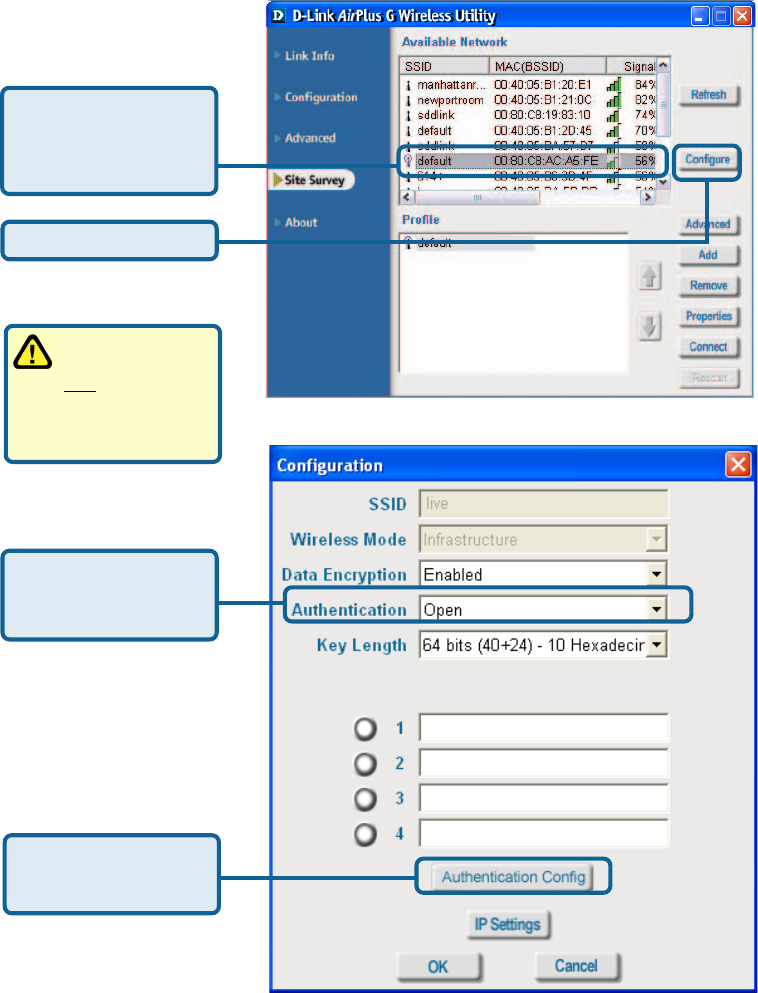
18
Using the Configuration Utility (continued)
Authentication > WPA-PSK
Click Configure.
Select the available
network to which you
want to connect.
WPA-PSK does
not require a
RADIUS Server
in the network.
Select WPA-PSK in
the Authentication
field.
Click Authentication
Config
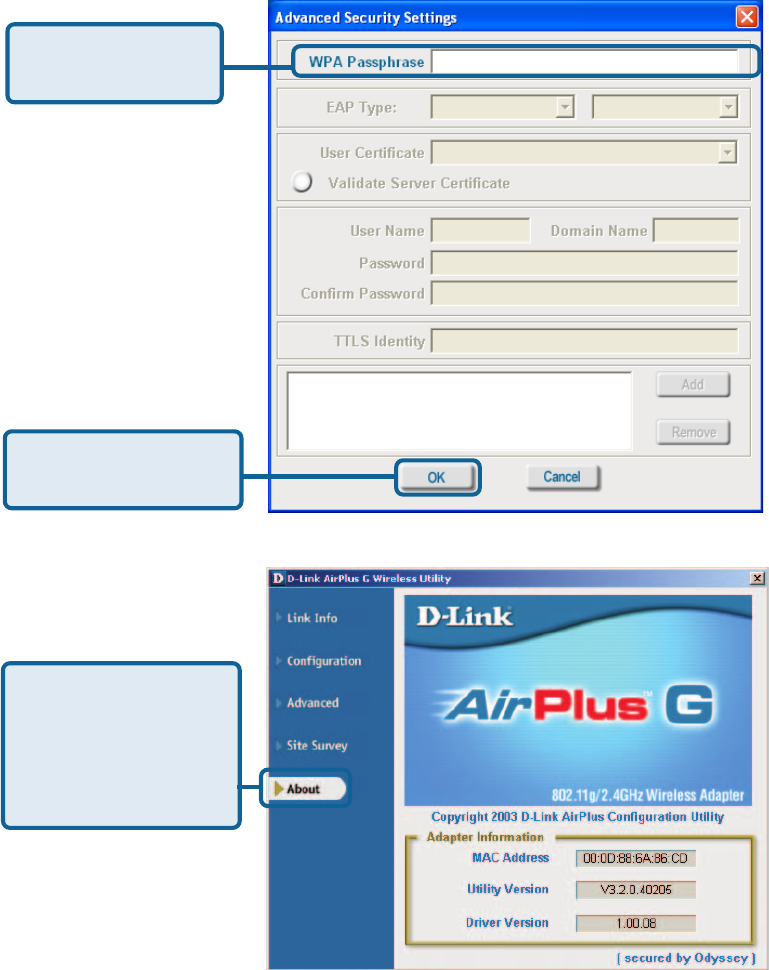
19
Using the Configuration Utility (continued)
Authentication > WPA-PSK (continued)
Enter the WPA
Passphrase.
About
Advanced Security Settings
The About screen gives
you the MAC address,
Utility Version and the
Driver Version of the
DWL-G120.
Click OK.
The configuration is done.
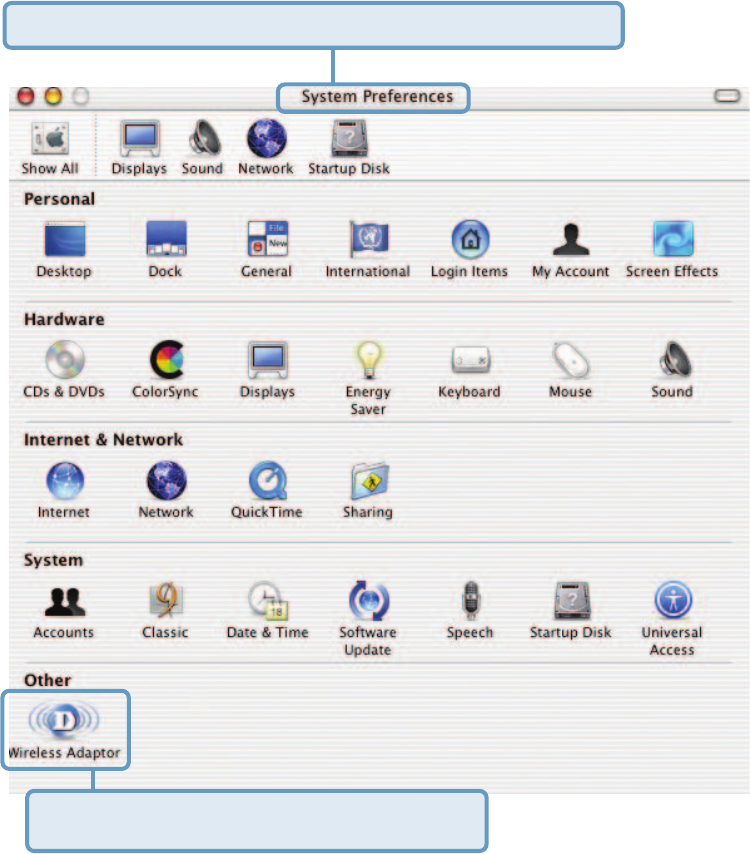
20
After you have completed the installation of the DWL-G120 into your
Macintosh computer (please refer to the Quick Installation Guide included
with the product), follow the steps below to access the configuration settings.
From the Apple pull-down menu select System Preferences.
Using the Configuration
Utility with Macintosh OS
Double-click on the Wireless Adaptor icon.
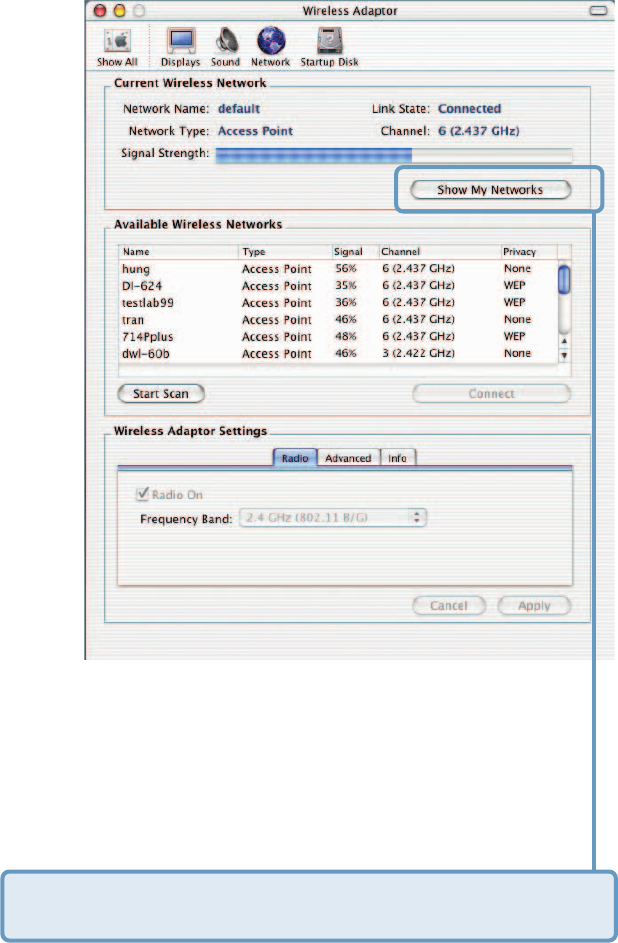
21
Using the Configuration Utility with Macintosh OS
(continued)
This window will ap-
pear displaying the
following:
Current Wireless
Network settings:
Network Name; Net-
work Type; Link Sta-
tus; Channel; and
Signal Strength.
Available Wireless
Networks includ-
ing:
Name; Type; Signal;
Channel; Privacy.
Start Scan:
Click Start Scan to
rescan for an avail-
able wireless net-
work at your current
location.
Connect: Highlight a
network profile and
click Connect to
connect to that net-
work profile.
Wireless Adaptor Settings:
Radio On: Select or deselect
Frequency Band: Displays the frequency band; default is 2.4GHz
(may not be changeable).
Click Show My Networks to manage your network profiles.
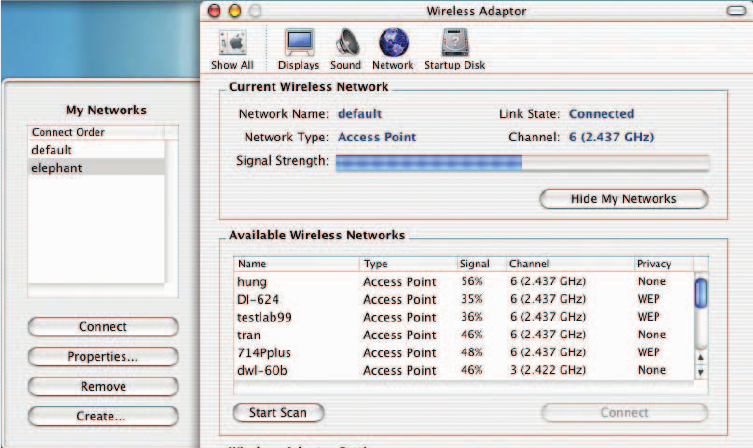
22
Using the Configuration Utility with Macintosh OS
(continued)
My Networks
Connect: Highlight a network profile and click Connect to connect to that net-
work profile.
Properties: Highlight a network profile and click Properties to configure that
network profile. (See screens on the next page.)
Remove: Highlight a network profile and click Remove to remove that network
from the profile list.
Create: Click Create to create a new network profile, manually. (See screens
on the next page.)
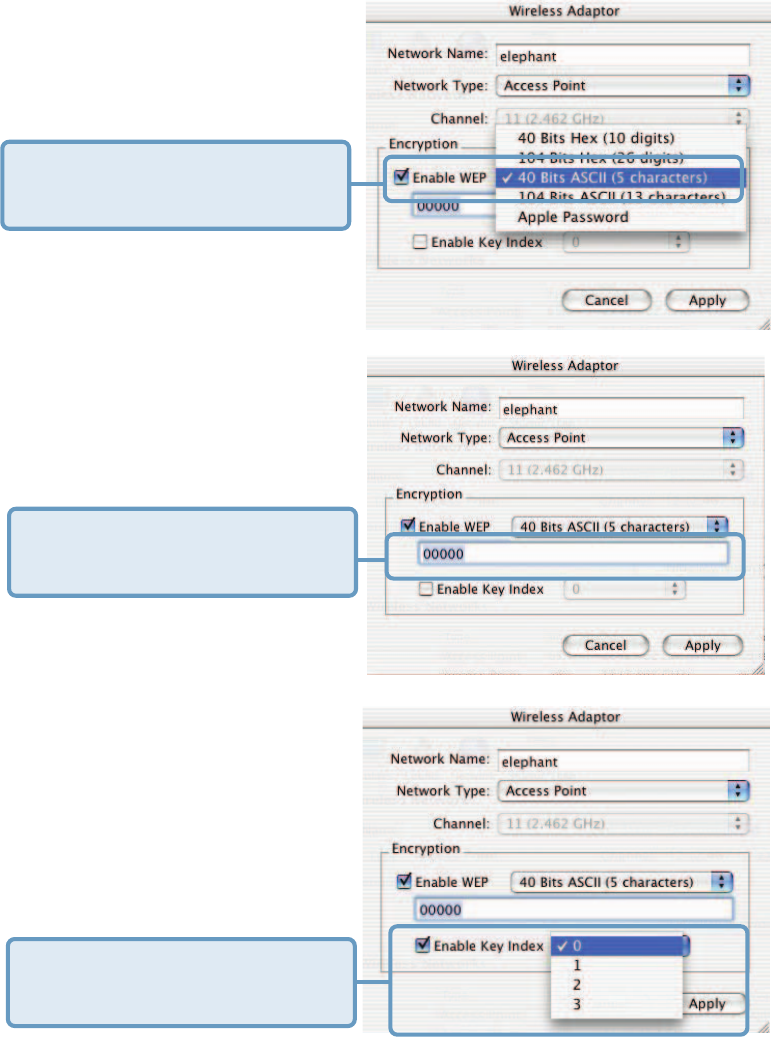
23
Using the Configuration Utility with Macintosh OS
(continued)
My Networks >
Create and/or Properties
Select the level of WEP encryp-
tion. In the example, 40 Bits ASCII
was chosen.
Enter the WEP string, in this case
5 ASCII characters have been
entered.
Select the key that you wish to
use. You can input up to four
keys.
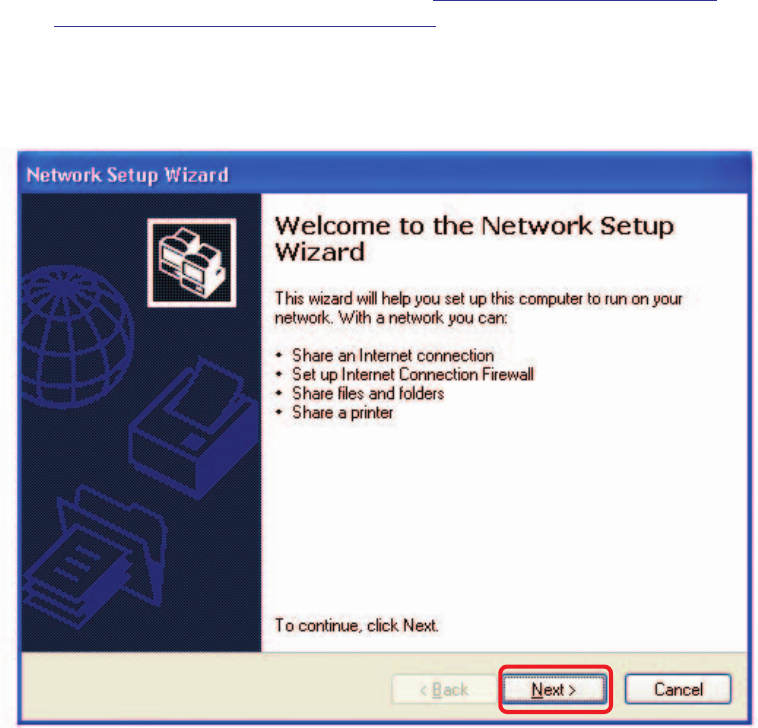
24
Using the Network Setup Wizard in Windows XP
In this section you will learn how to establish a network at home or work,
using Microsoft Windows XP.
Note: Please refer to websites such as http://www.homenethelp.com
and http://www.microsoft.com/windows2000 for information about networking
computers using Windows 2000/Me/98SE.
Go to Start>Control Panel>Network Connections
Select Set up a home or small office network
Networking Basics
When this screen appears, click Next.
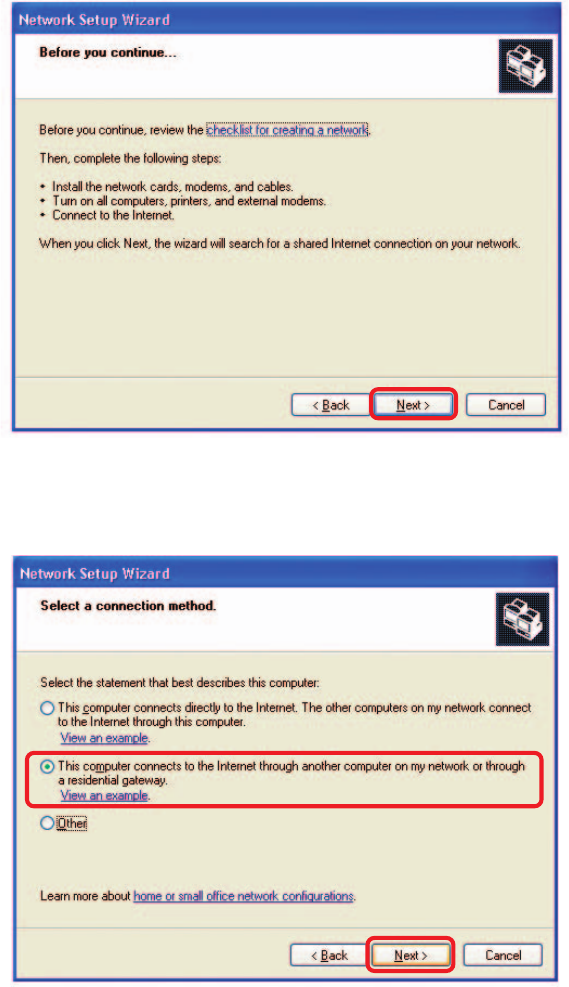
25
Please follow all the instructions in this window:
Networking Basics (continued)
Click Next.
In the following window, select the best description of your computer. If your
computer connects to the Internet through a router, select the second option
as shown.
Click Next.
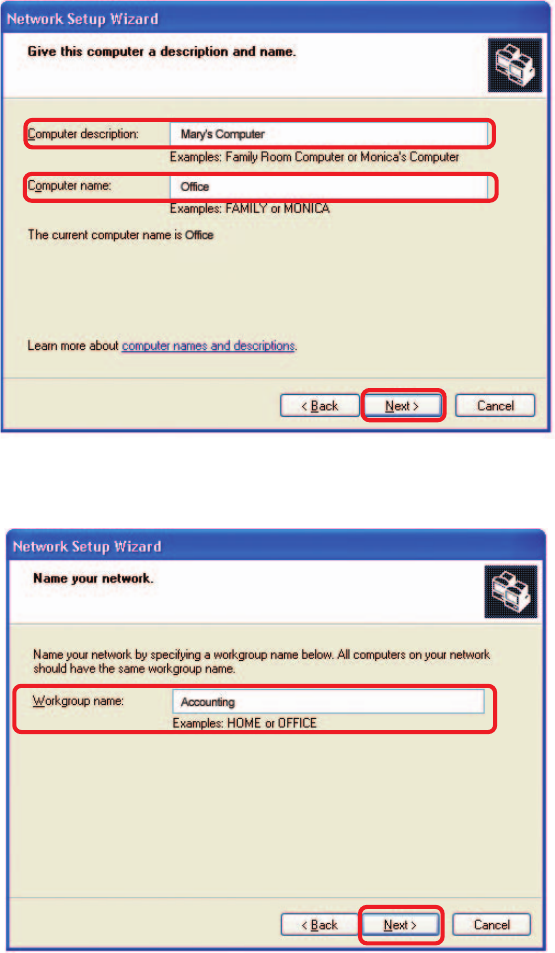
26
Enter a Computer description and a Computer name (optional.)
Networking Basics (continued)
Click Next.
Enter a Workgroup name. All computers on your network should have the
same Workgroup name.
Click Next.
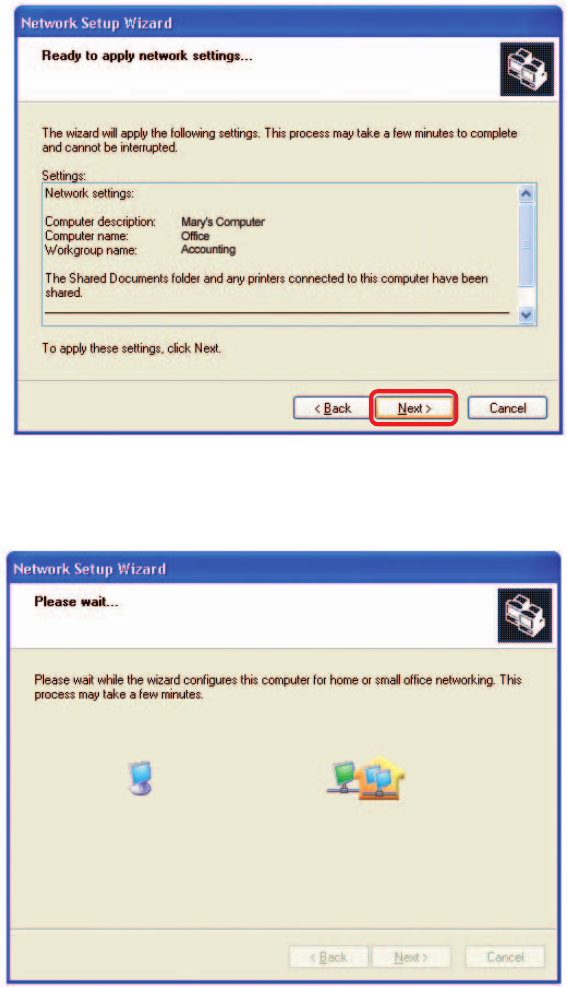
27
Please wait while the Network Setup Wizard applies the changes.
Networking Basics (continued)
When the changes are complete, click Next.
Please wait while the Network Setup Wizard configures the computer.
This may take a few minutes.
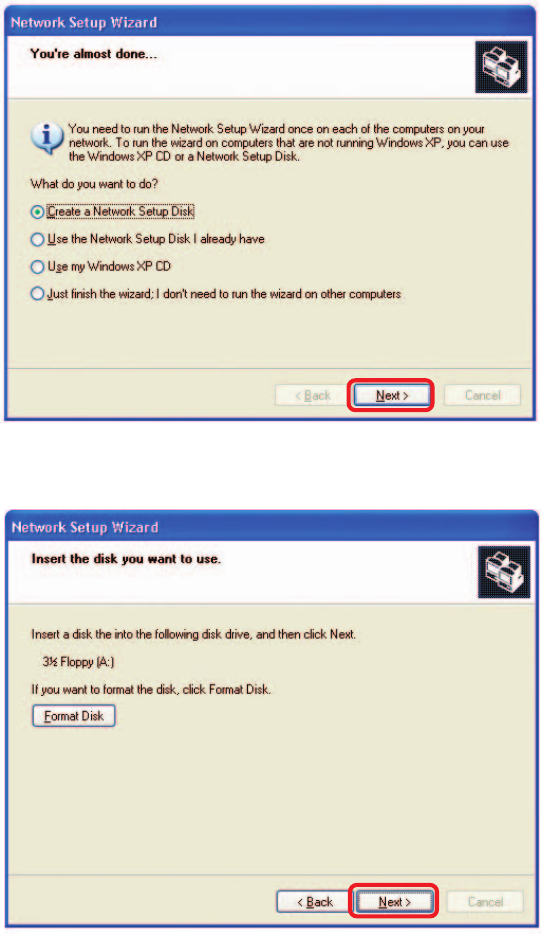
28
In the window below, select the option that fits your needs. In this example,
Create a Network Setup Disk has been selected. You will run this disk on
each of the computers on your network. Click Next.
Insert a disk into the Floppy Disk Drive, in this case drive A.
Networking Basics (continued)
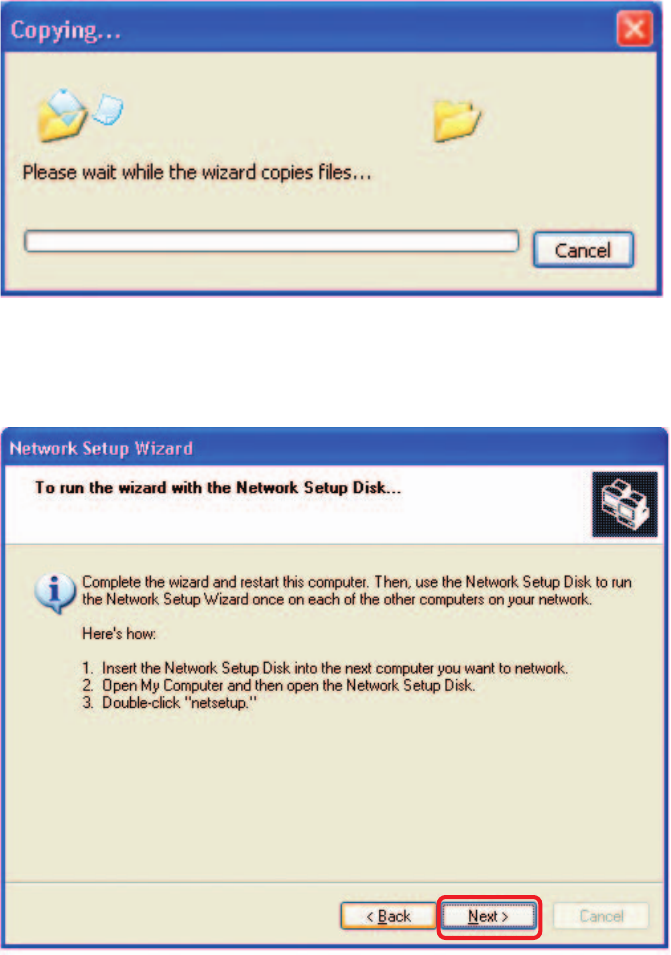
29
Please read the information under Here’s how in the screen below. After you
complete the Network Setup Wizard you will use the Network Setup Disk to
run the Network Setup Wizard once on each of the computers on your net-
work. To continue click Next.
Networking Basics (continued)
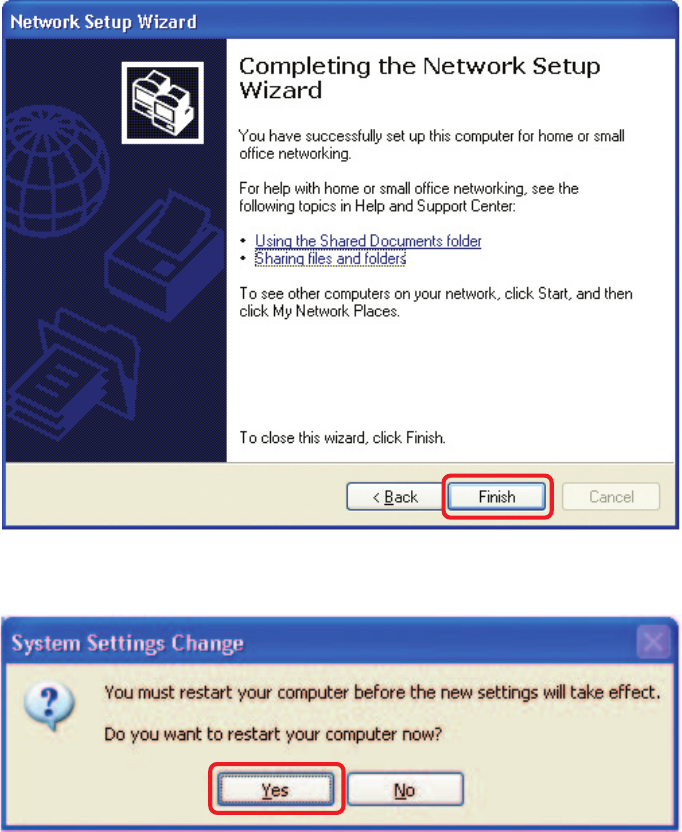
30
Please read the information on this screen, then click Finish to complete the
Network Setup Wizard.
The new settings will take effect when you restart the computer. Click Yes to
restart the computer.
You have completed configuring this computer. Next, you will need to run the
Network Setup Disk on all the other computers on your network. After running
the Network Setup Disk on all your computers, your new wireless network
will be ready to use.
Networking Basics (continued)